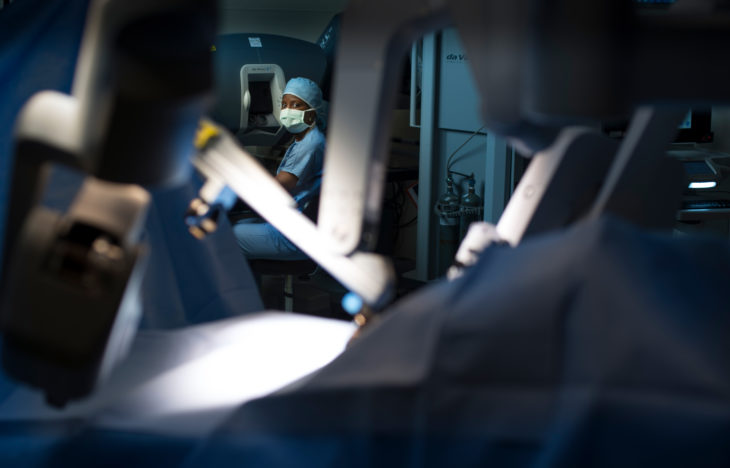By Jessica Opoku-Anane, MD, MS
Forty to 50% of patients with endometriosis experience a recurrence of endometrial cell growth and pain within 5 years after surgical treatment, even with medical suppression. (Guo 2009) Recurrence is much higher in patients whose endometriosis is advanced at the time of surgery. Once the symptoms return, patients often need to have an additional surgery to ameliorate the pain. This cycle is very taxing for patients physically, emotionally, and financially. Physicians also don’t want patients to return with the same symptoms because there are fewer options for complete eradication after previous modalities have failed, and it becomes a process of management rather than remediation.
Often, by the time patients have surgery for endometriosis, they have gone from doctor to doctor for years, trying different treatments they’re told will help or, worse, being disbelieved or put off. I see many patients whose doctors told them that endometriosis generally reoccurs 1 to 2 years after surgery, so repeat surgeries are the norm. Multiple surgeries become another source of pain and scar tissue for these patients. What’s more, they experience anxiety and depression as a result of living with chronic, worsening pain and trying repeated, failed treatments.
The solution, in my opinion, is to treat all of the endometriosis in a single surgery. It is possible. In the last 3 years of performing three or four endometriosis surgeries per week, I have only needed to do repeat surgery on six patients. Four key efforts help me treat patients effectively:
1. Excise endometriosis, rather than ablate it. Excision is the only modality that allows us to remove endometriosis completely, ensuring that most patients will not need another surgery. Excision can be done with monopolar scissors or any other energy source. I prefer the Lumenis UltraPulse Duo CO2 laser, which allows me to dissect near important structures such as the ureters, rectum, fallopian tubes, nerves, and ovaries without damaging them. Excision is not taught in routine OB-GYN training, but its advantages over ablation (complete removal without damaging underlying tissues, as well as less recurrence of pain) make it well worth the effort.
2. Perform excision frequently (or refer to someone who does). We know that the more we perform a surgery, the more effective we are. Additionally, early lesions of endometriosis are often subtle and missed. I recommend gaining routine experience in identification and excision of endometriosis or referring patients to surgeons who do more of the procedure. About 70% of my excision cases are referrals.
3. Acquire the appropriate imaging before surgery. Preoperative planning for endometriosis surgery is important. Advanced, deeply infiltrative endometriosis is often missed. At our institution, we have a specific MRI protocol to look for deeply infiltrative endometriosis throughout the abdomen and pelvis. Whether MRI or ultrasound is used, studies suggest that centers with specific protocols and a high volume of endometriosis patients detect more endometriosis. In addition, a full history and pelvic exam with palpation help guide me to the source of the pain and lesions that are less visible through imaging. When patients don’t have detailed preoperative imaging, surgeons ablate the “tip of the iceberg,” leaving the bigger mass behind. These patients will show poor response to medical management and need to have more surgery until the endometrial cells are gone.
4. Understand there are multiple sources of pelvic pain. Excision guided by detailed preoperative planning can help us treat endometriosis in a single procedure. However, patients with endometriosis can have pelvic pain from other sources that need to be addressed as well. For example, pelvic floor dysfunction is very common in endometriosis patients. It can take 6 months or more of physical therapy for muscles to relax and pain to fade. Patients also may have painful bladder or irritable bowel syndrome, which comprise a “common triad” with endometriosis. Central sensitization, an inappropriate processing of pain signals, is also possible as a response to chronic pain. We need to be aware of and consider these and other sources of pain, diagnose them effectively, and work with other providers to ensure all the causes of a patient’s pain are addressed.

Jessica Opoku-Anane, MD, MS, is Director of the University of California San Francisco Center for Endometriosis.
Reference
Guo SW. Recurrence of endometriosis and its control. Human Reprod Update. 2009 July-Aug; 15(4):441-61
The content presented on this page is provided for informational and/or educational purposes. This material represents the views and opinions of its authors and should not be construed as representing or reflecting the official position, views or opinions of the Society of Laparoendoscopic Surgeons. The authors of the work are solely responsible for its content.



